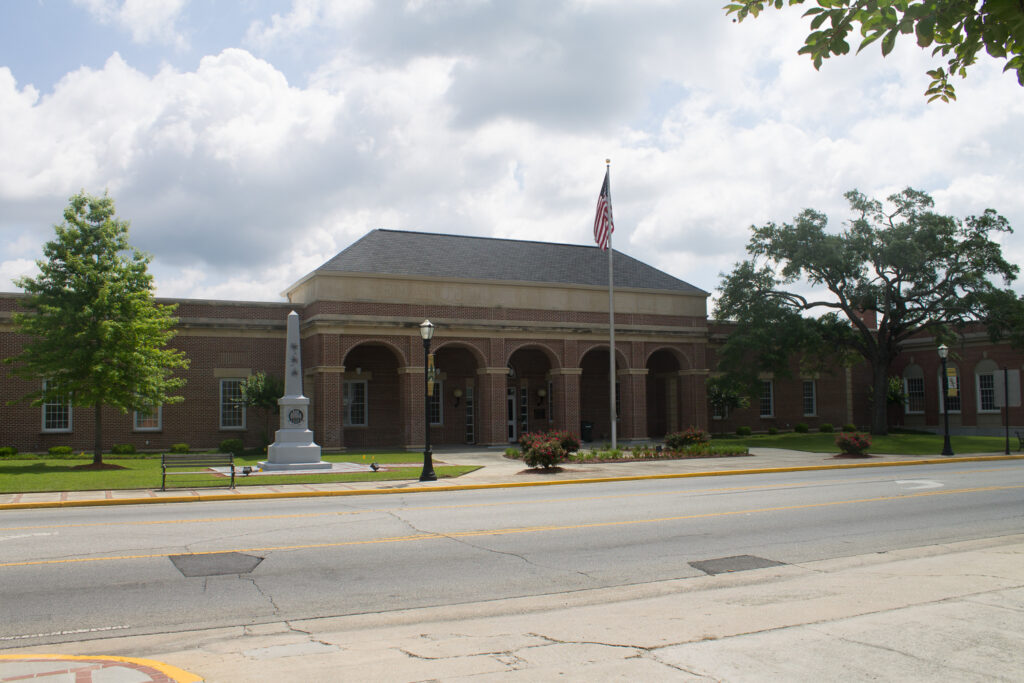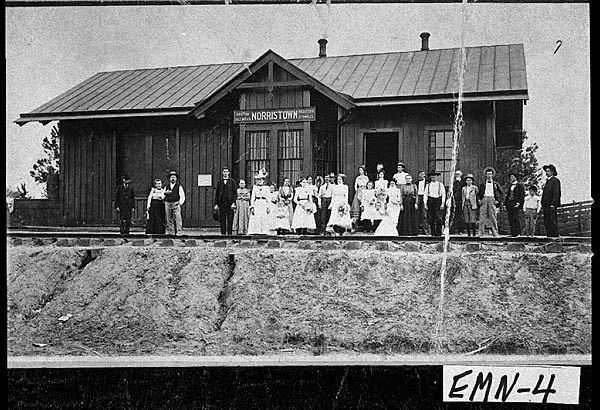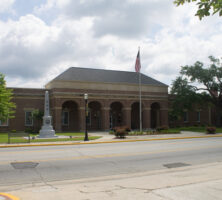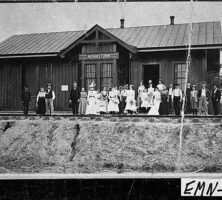Emanuel County, in southeast Georgia’s wiregrass region, is the state’s thirty-ninth county. It was carved from Bulloch and Montgomery counties in 1812 and named for David Emanuel, a veteran of the Revolutionary War (1775-83) who served as governor of the state in 1801.
Although portions of Emanuel County were later annexed by five other counties, Johnson (1858), Jenkins (1905), Toombs (1905), Candler (1914), and Treutlen (1918), its remaining 686 square miles make it the seventh largest in area of Georgia’s counties.
The county’s original inhabitants were Creek Indians, who lost their land in the 1773 and 1783 Indian cessions. The first white settlers arrived thereafter, acquired land by lottery, and cleared arable land from the pine barrens that cover the county to set up subsistence farms. Forest-related industries soon joined agriculture as an economic mainstay, with the longleaf pine forests providing raw material for sawmills, turpentine stills, and cabinetmakers.
In the age of the automobile, Swainsboro, the county seat, has been called the “Crossroads of the South” for its location at the intersection of U.S. highways 1 and 80. In 1822 the state legislature named it “Swainsborough” in recognition of Stephen Swain, the state senator who introduced the bill for the county’s creation in 1812. The town’s name was changed to Paris at its incorporation on February 18, 1854, but three years later reverted to its current name, Swainsboro.

There are seven other incorporated towns in the county: Adrian, Garfield, Nunez, Oak Park, Stillmore, Summertown, and Twin City. Some communities in the county have unusual histories. Because of a late-nineteenth-century family feud, the county line zigzags through the town of Adrian, placing part of it in Johnson County and part of it in Emanuel County. The town of Stillmore, originally called Kea’s Mill, received its current name from residents with a sense of humor. They were prompted by a U.S. Post Office memo accompanying a list of potential new names for their town. The memo advised them that if they did not like any of the names on the list, “still more” could be sent.
Before the Civil War (1861-65), transportation through the county was hindered by a lack of roads, and the population remained sparse. This did not prevent Union general William T. Sherman’s troops from sweeping through the area in late 1864 on their march to the sea, however, and descendants of those who lived through the march still consider it a major part of the county’s history. Many farms fell into a state of disrepair during the war, and efforts to rebuild were difficult after the cessation of hostilities. The county retained a rural character, chiefly because of the lack of roads and railroads. The first train tracks in Emanuel County were not laid until the 1870s, but when the railroads arrived, an era of large-scale lumber industry began. Nearly a century later, in the 1960s, a vigorous increase in both population and industrial trends led to the county’s becoming a center for financial investment.

Colleges in the area include East Georgia State College and Southeastern Technical College.
Notable Emanuel County residents include Pat Mitchell, the first woman to lead the Public Broadcasting Service. Among the places of interest are the Emanuel Arts Council, which offers a gallery and a gift shop, and the George L. Smith State Park, which houses the renovated Parrish Mill, a combination gristmill, sawmill, covered bridge, and dam dating from the 1880s. Annual events include the Pine Tree Festival, Garfield Washpot Cookout, and Agricultural Appreciation Day.
According to the 2020 U.S. census, the population of Emanuel County is 22,768.










